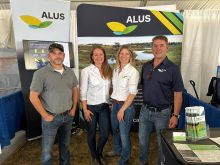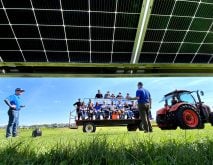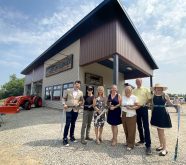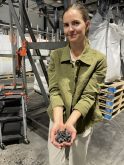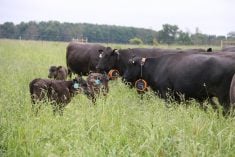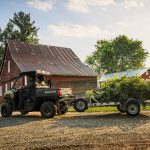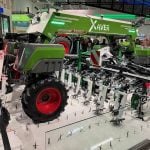There’s always room for improvement when it comes to equipment design and setup, according to grain growers Warren Schneckenburger, Mark Burnham, and Chuck Baresich.
Speaking during the 2022 Innovative Farmers Association of Ontario conference IFAO), each panelist detailed what large overhauls and small tweaks have made the most significant differences on their respective farms.
Why it matters: It’s rare for equipment to perfectly meet all production needs. Even small changes can solve big production problems.
Read Also
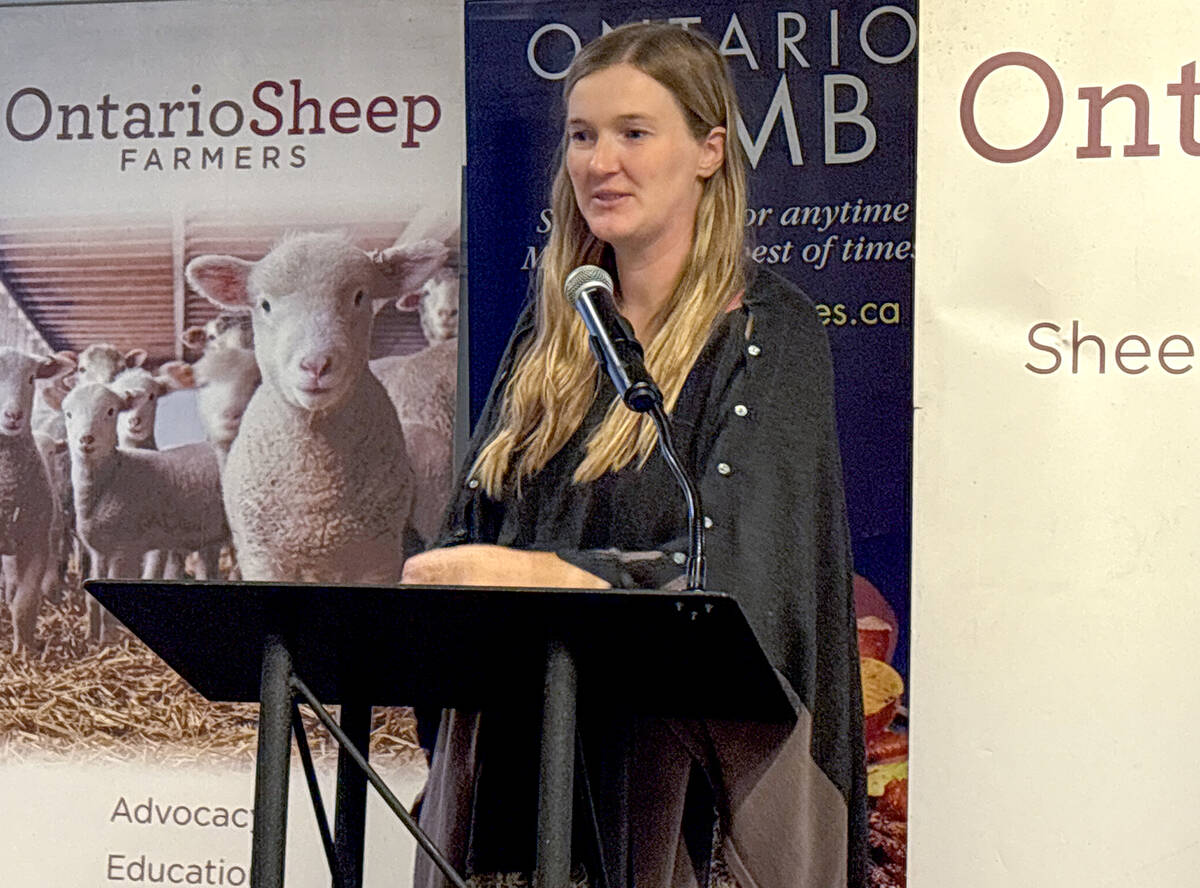
Footflats Farm recognized with Ontario Sheep Farmers’ DLF Pasture Award
Gayla Bonham-Carter and Scott Bade, of Footflats Farm, win the Ontario Sheep Farmers’ 2025 DLF Ontario Pasture Award for their pasture management and strategies to maximize production per acre.
Warren Schneckenburger, Morrisburg
The need to alleviate compaction on heavy, poor-draining soils was the driving force behind many equipment changes on Schneckenburger’s operation.
At one time, tracks were the apparent answer to rutting and general soil damage. Now, however, investments in larger tires and tire technologies such as on-demand inflation systems have proven more valuable.
“But bigger is not always better,” says Schneckenburger, describing how he had to strike a balance between compaction reduction with his current air cart setup.
“In this scenario the air cart behind the planter is traveling though an already-planted field. We’ve tried to optimize the space available without driving on the seed zone. Upgrading from a regular radial tire, which is not terrible, to a VF (Very High Flexion) and a little wider, a little taller and a wider footprint made a huge difference.”
Central air inflation systems also proved invaluable. Additionally, he believes the parts interchangeability between tire systems (brands) is a boon for customization.
“Tracks definitely have their place … I don’t know about both main tractors being on tracks in the future.”
Additionally, a drop line system allowing for horizontal spray applications between crop rows, a rock picker, as well as other equipment modifications have helped solve endemic labour issues.
Perhaps the most important investment, however, was a shop. Though always expensive, the ability to work on equipment through the cold winter months makes it significantly easier to be prepared come spring.
“Learn how to weld … also know your weaknesses. If you’re not comfortable there’s someone out there to help,” says Schneckenburger.
Chuck Baresich, Bothwell
Though sand is often considered a more forgiving soil type, Baresich says high volumes of residue in their no-till system, affinity for frost, and low cation exchange capacity (CEC) leave little room for error. In this context, equipment and the changes it brings to the soil are viewed as a system to be trialed and troubleshooted over multiple seasons.
“It’s a means to an end. You cannot correct a mistake you made with one piece of equipment with another piece of equipment … each piece of equipment adds on to the previous step,” says Baresich.
Augmentations to their combine — a residue chopper and rear distributor, specifically — have proven invaluable tools for managing field trash. The former is ideal for managing corn stalks, while the partnership of a 45-foot MacDon head with a power tail board, capable of spreading residue up to 45 feet, works wonders in soybeans.
Fertilizer rate control, plus better placement control, have also been beneficial in adapting to changes in fertility requirements year-to-year. Going to an air-pressure system rather than springs on his planter has similarly helped establish much more uniform stands — a result of more consistent and potent downforce. Indeed, Baresich says they found a direct correlation between higher downforce and greater crop stand uniformity. The incorporation of Mojo Wires onto his planter’s seed firmers similarly helped foster better stands through more effective seed-to-soil contact.
Like Schneckenburger’s efforts at compaction reduction, Baresich adds modifying equipment to be lighter — moving the air cart of his 24-row Kinze planter nearer to the tractor, and incorporating individual seed boxes to spread the burden over a wider area, for example — has reduced the impact of pinch rows.
“The first combine I ever rode in weighed 18,000 pounds. The combines out now are 45,000 pounds … Everything is getting heavier and heavier, so the next piece for us is controlled traffic.”
Mark Burnham, Cobourg
The challenges and remedies on Burnham’s farm reflect those described by Schneckenburger and Baresich.
Better compaction management, for example, has been accomplished by incorporating high flexion tires into his corn planter, and wide radial ones for tractors. Removing unnecessary weight from newer purchases, such as an otherwise fully ballasted tractor, has helped too. The need to penetrate soil covered with green matter, conversely, led Burnham to modify his planting equipment by incorporating greater downforce capability, as well as rippers ahead of trench openers.
“We don’t have proper drainage and often are in marginal conditions,” says Burnham in reference to his compaction-prevention efforts.
Regarding labour challenges and the need for efficiency improvements, small adaptations — such as metal brackets designed to keep seed feeder tubes from disconnecting every 20 acres — as well as a home-designed a sprayer tender system have gone a long way.
“It saved a ton of time at filling. We covered a ton of acres…its all about efficiency.”
Overall, Burnham considers the modification process initiated as soon as new equipment reaches the farm.
“If you have a certain idea in mind, and you’re potentially going to upgrade it, really search and make sure the machine can handle any potential upgrades you want before you even start,” he said.
“If you bought the wrong piece of equipment, you’re going to have some headaches.”






